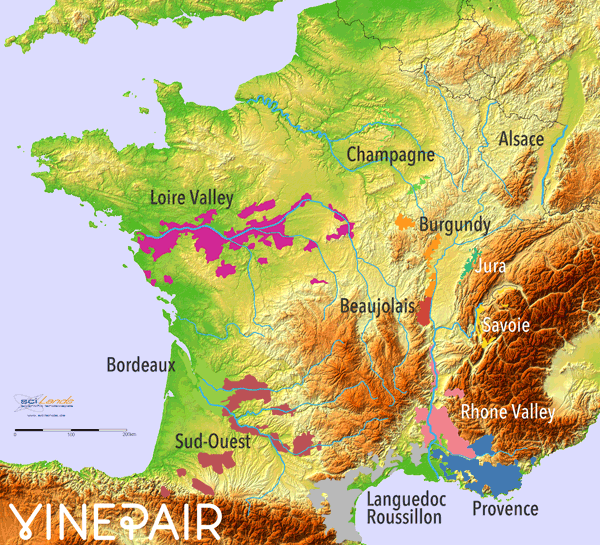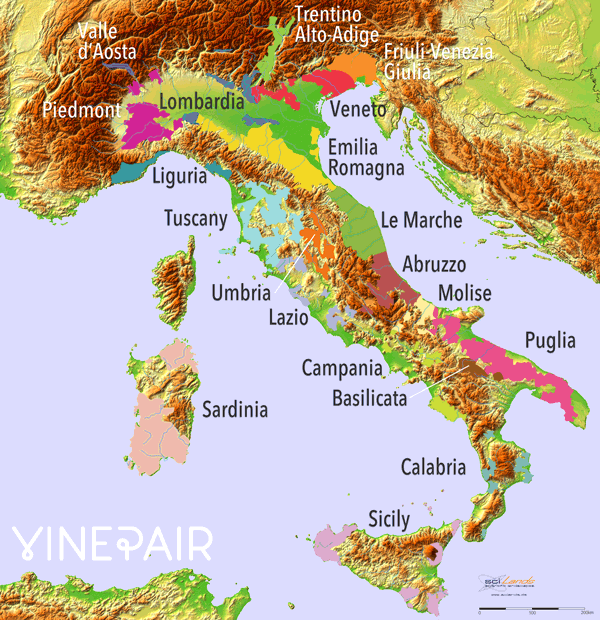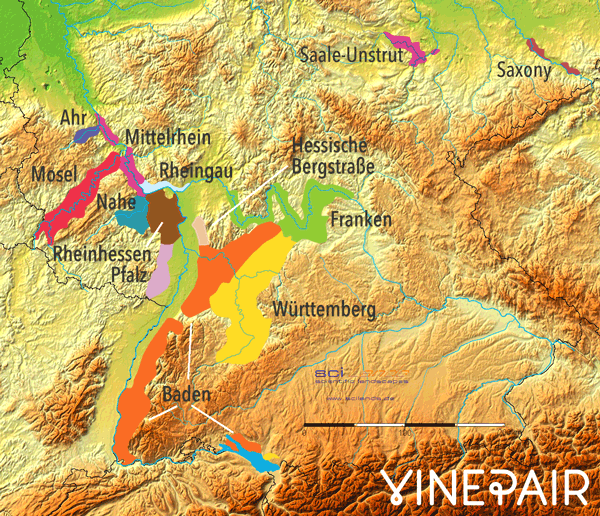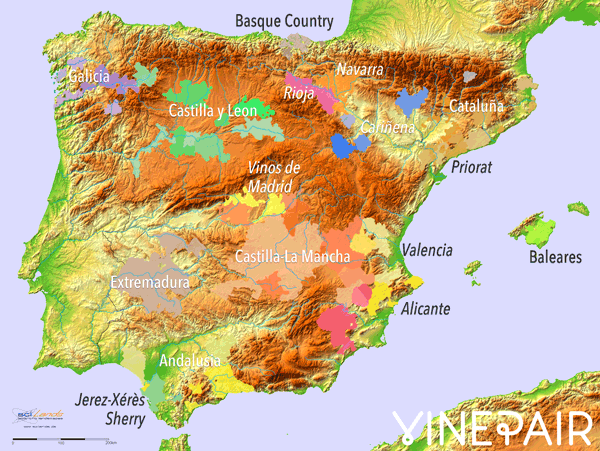When you open a bottle of wine it’s easy to forget that growing wine grapes is farming and farming is all about taking advantage of the land you have. Where wine grapes grow easily and produce large yields — flat, fertile farmland — the resulting wine is more often than not on the cheaper side. Hillsides and valleys are prized by winemakers for both their incline to the sun and the land’s ability to drain itself as water departs for lower ground. Since ancient times, these sorts of sites have been sought out, planted, and cultivated. Some of the most famous of Europe’s hillsides and river valleys have been in nearly continuous use since the days of the Roman Empire.
The four animated maps below, of France, Italy, Germany and Spain, allow you to see one important aspect of this for yourself — the shape and height of the land throughout each of their wine growing regions. While each country is unique, and soil and climate play equally vital roles in what sort of wine you can produce, these maps offer a unique view of how and where wine is grown in Europe.
The source for each of the underlying digital relief maps is scilands GmbH.
France
In the west of the country, the land where wine is grown is fairly flat and low. Bordeaux’s famous vineyards lie on gravelly land close to (often right beside) the Gironde estuary. The vineyards of the Loire span a vast river valley, criss-crossed by the Loire River and its tributaries. The famous regions in the east such as Burgundy and the Rhone Valley are defined by hillsides, with particularly steep inclines found in the Rhone.
Italy
Italy’s wine regions in the far north are often situated in mountain valleys, at the edge of the Alps. The Po valley cuts a wide, low easy-to-spot swath across the country’s north. Looking to the western edge of the Po Valley you can see that Piedmont’s famed vineyards sit on higher, hillier land. Moving south on both sides of the boot, the wine growing regions are situated on the edges of the Apennines which appear like a spine running down the length of the peninsula. Mt. Etna is easy to spot on Sicily, along with the famous vineyards that wrap around its eastern slopes.
Germany
The legacy of Roman presence in Germany is clear, with wine grown on hillsides and in river valleys. The famed curves of the Mosel River are easy to spot even when the river itself is hidden on the map. Many of the vineyards in Baden cling to the Rhine River, part of a vast rift plain. On the other side of the Rhine is France’s famed Alsace region. An odd feature in the northwest corner of the map are a number of ‘holes’, the visible scars of massive surface mining operations that involve the largest land vehicle on Earth (you can also spot these on the map of France). For visual clarity, Germany is cropped and zoomed to only where wine is grown in the country.
Spain
Spain’s geography dictates that many of its vineyards appear and are planted quite differently than those throughout the rest of Europe. The Meseta Central is a vast, dry mountain-rung plateau that covers the interior of the Iberian Peninsula. With water scarce, low yielding vines are spread far apart, covering large swaths of land. In the east of the country, the famous Rioja region sits in a river valley protected by mountain ranges to the north and the west. For clarity, only a few of the dozens of D.O’s are listed in italics, along with the names of prominent autonomous communities.




